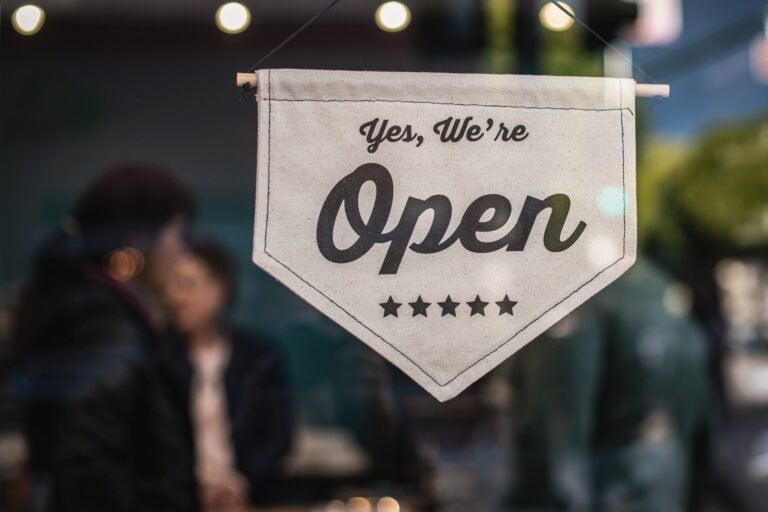Kathryn Petralia, Co-Founder of Kabbage, an American Express Company
Lawmakers have pointed to stabilized GDP and a surging stock market as evidence that the nation is poised to return to “normal” after 2020’s economic catastrophe. But GDP and the S&P are not adequate proxies for real world conditions, especially for the smallest businesses, the ones that define our neighborhoods and communities.
After the crash of 2008, the government emphasized stabilizing financial markets over assisting small businesses and struggling households. Even if well intentioned, the resulting redistribution was so profound that analyst Karen Petrou called these policies The Engine of Inequality as they aided mostly the top few percent.
Even in the small business category, the already-substantial gap between the largest and the smallest firms widened during the COVID recovery, according to new survey data. In short, businesses with more than 100 employees are growing: the largest small businesses saw an average of 33% profit and 35% growth year-over-year. For some, the rally has been nothing short of heroic.
However, the outlook for businesses with fewer than 20 employees—which comprise 90 percent of all businesses in the nation, employ half of Americans, and generate half our economic activity—is considerably more uncertain. According to the data, the smallest businesses saw profits dry up completely, and reported just 2% revenue growth year over year.
Meanwhile, the NASDAQ, heavily comprised of Big Tech stocks, climbed over 43% by the end of 2020.
Outcomes have begun to diverge, raising concerns about a K-shaped recovery. Wall Street has regained its footing, but Main Street may take more time, and more support, to rebound.
Will Small Business Bounce Back?
Yes, eventually. But, better measures of business health, like access to funding, staffing and hiring, restored supply chains, consumer confidence and the availability of goods and services to small business buyers could give us a clearer picture of our economic situation. The reality toggles between glass half-full and empty.
On one hand, revenue for the small business sector as a whole dropped by one-fifth. On the other, recent data show the percentage of small business revenue from online sales increased from 37% to 57% in less than one year, owing to changes in consumer behavior and small business offerings during the COVID-19 lockdowns.
Many SMBs executed impressive pivots to stay afloat in the COVID confusion. Tens of thousands more—and no one’s quite sure how many—sank into insolvency instead and will not reopen. Meanwhile, a record four million new businesses were registered in 2020. During one three-month stretch, the country added more new businesses than any other quarter in its history.
We’re getting there, but as a nation we mustn’t be quick to claim victory.
New data from small business decision makers themselves gives us a better understanding of their well-being. Asked how they would know their business had fully recovered from the pandemic, most told surveyors that reliably making payroll was the crucial test. “Paying employees their full wages without concern” outranked owner salaries, increased revenue, and customer demand as the key signal for small businesses recovery.
Increased need for services has led to innovation. The very smallest firms are most likely to adopt emerging technologies, as they don’t have to contend with large, legacy systems. The already-rapid digitization of customer relationships, and the growing ratio of online-enabled offerings, may have been accelerated by as much as seven years.
One of the success stories of the COVID recovery so far has been the SBA’s decision to include FinTech firms in the distribution of PPP. Early on, Paycheck Protection Program funds mostly went to the largest businesses, as pre-existing relationships with major banks were a prerequisite for early loan success, and many banks used customer portals to collect applications.
FinTech firms were arguably a saving grace for the smallest businesses and helped smooth wider distribution. Yet, even with their help, outcomes were still skewed: one in three businesses with more than 100 employees received the forgivable federal loans; just one in seven of the smallest businesses received help.
Small business owners continue to see cash flow as a major challenge in coming years.
In Conclusion
Like the consequences of the shutdowns, the recovery is far from uniform. Booming growth, bull markets, crypto surges—these have little relevance to the real-world health of our economy.
A decade of “roaring 20s” celebration is possible, but it’s not here yet. If the needs of the smallest firms are not perfectly aligned with the needs of the largest—their recovery won’t be, either.
About the author

Kathryn Petralia is the co-founder of Kabbage Inc., an American Express Company. Kathryn is a seasoned leader in financial services with more than 20 years of experience across credit, payments, and lending. Recognized as one of the 100 Most Powerful Women in the World by Forbes, Kathryn helps lead Kabbage to simplify the way small businesses access the capital and services they need to build lasting businesses.
Related Articles

The Rise of Digital Experience Platforms (DXPs) in Software Development
Software development is evolving, as Digital Experience Platforms enable the delivery of a personalised digital cross-channel experience. A DXP delivers integrated content, Artificial Intelligence, and low-code rapid application development tools. It streamlines the work of developers as well as marketers.

7 Employee Benefits That Can Help Your Business Increase Staff Retention
With so many businesses vying for the attention of skilled job candidates, it’s becoming more important to look for ways to make your offerings more appealing by adding unique perks that not every employer does.

How Retailers Can Prepare for the Summer 2025 Shift
Rather than focusing on isolated touchpoints or departmental KPIs, journey management provides a way to understand where the most critical pain points lie and how to resolve them systematically across the business.

Retailers Are Drowning in Data – Journey Management Could Be the Lifeline
Rather than focusing on isolated touchpoints or departmental KPIs, journey management provides a way to understand where the most critical pain points lie and how to resolve them systematically across the business.



 for the latest news and job opportunities in retail tech
for the latest news and job opportunities in retail tech 